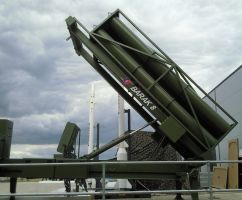India Test Fires Long Range Surface to Air Barak-8 Missile Successfully

India has successfully test-fired its Long Range Surface-to-Air Missile (LRSAM), Barak-8, from a warship today.
Spokesperson of the Ministry of Defense tweeted Wednesday, "Successfully test fires long range surface to air missiles from INS Kolkata. Aerial targets destroyed at extended ranges."
The missile is developed by joint collaboration of Israel’s IAI and Indian Defense Research Development Organization (DRDO). The missile was tested for all weather conditions and was fired after 12 AM on Wednesday.
The Indian Navy fired two missiles from INS Kolkata warship.
The Barak-8 has been designed to defend against a variety of short-to-long-range airborne threats, including fixed-wing aircraft, helicopters, drones and projectiles.
It incorporates a phased array multi- mission radar, two-way data link, and a flexible command and control system that enables it to simultaneously engage multiple targets day and night and in all-weather conditions.
Defenseworld.net correspondent Pinaki Bhattacharya quoted sources in the DRDO say that “the after part of the missile was developed here, while fore part was by the IAI.”
The after part built by the DRDO had a key element – a dual pulse motor. The first part is for a flawless launch, powered by the first pulse and propulsion to a high altitude and the second pulse is for steering the missile to target.
The fore part of the missile consists of the seeker that makes the missile home into target. The seeker is radar signature based, with a ground-based command and control system. But in the final stages of hitting target, the Barak NG, can be left alone as it homes on to the target.
The Indian Navy has signed off on the system, now ready to be inducted, as a “niche capability.”











